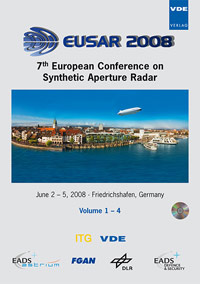Progress of Hybrid Bistatic SAR: Synchronization Experiments and First Imaging Results
Konferenz: EUSAR 2008 - 7th European Conference on Synthetic Aperture Radar
02.06.2008 - 05.06.2008 in Friedrichshafen, Germany
Tagungsband: EUSAR 2008
Seiten: 4Sprache: EnglischTyp: PDF
Persönliche VDE-Mitglieder erhalten auf diesen Artikel 10% Rabatt
Autoren:
Espeter, Thomas; Walterscheid, Ingo; Klare, Jens; Gierull, Christoph; Brenner, Andreas; Ender, Joachim (FGAN-FHR, Neuenahrer Str. 20, 53343 Wachtberg, Germany)
Gierull, Christoph (Radar Systems Section, Defence R&D Canada – Ottawa)
Loffeld, Otmar (Center for Sensor Systems (ZESS), University of Siegen, Germany)
Inhalt:
The hybrid bistatic SAR experiment with the TerraSAR-X satellite and FGAN-FHR’s airborne multi-channel SAR system PAMIR is supposed to deepen the expertise for future advanced remote sensing techniques. Operated on separated platforms, the X-band SAR systems are capable of imaging a scene with specific bistatic geometries, which for instance might improve the classification of objects with low monostatic RCS. Due to the spatial separation of the illuminating and receiving systems, synchronization is an essential and challenging issue. During a PAMIR flight campaign, several experiments were carried out, to validate and test the recently implemented synchronization techniques and to acquire hybrid bistatic raw data. In this paper synchronization techniques are presented and the experimental results are discussed.


